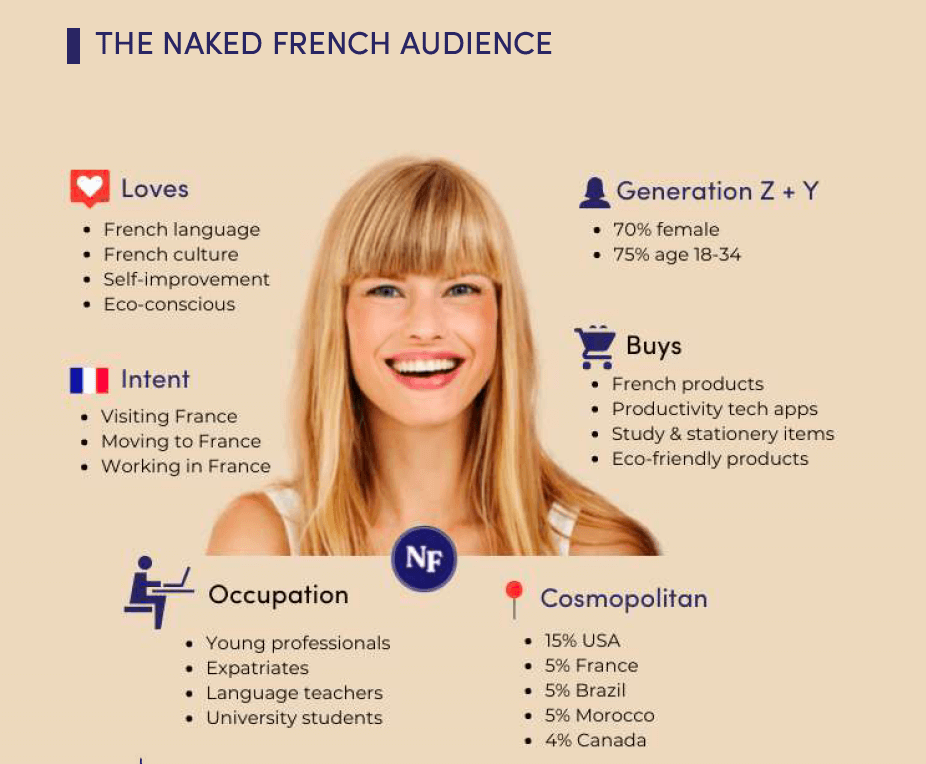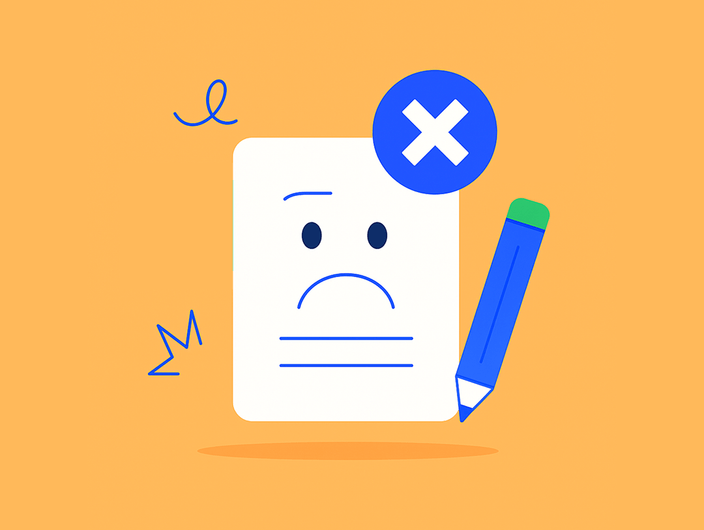Almost 4.5 billion people in the world today have at least one social media account.
TikTok is exploding in growth, having reached 1 billion monthly users in 2021.
Instagram also boasts around 1 billion monthly users.
And although Facebook is not so trendy with Gen Z anymore, it still takes out the top spot with a whopping 2.93 billion global users.
In 2022, it’s a no-brainer that you need to be using social media platforms for your business.
Why is it so hard to choose the right social media platform for your business?
I know — the answer to this question isn’t always simple.
I mean, last year we saw Clubhouse launch publicly and beat out TikTok, Instagram and Whatsapp in the app stores. But now everyone is saying that it’s dying and that its user base is declining? And it might potentially not be around for the long haul? What, what?
So could this have worked towards your business advantage, or would it have been a bad choice?
For some businesses, they were able to build a large audience very quickly and take advantage of being the first thought leaders in their space.
For other businesses, maybe their audience just wasn’t on Clubhouse, or maybe their audio content just wasn’t compelling enough. So for them, the cost and returns meant that continuing to invest time into Clubhouse would mean losing money.
Each business is unique, which means that the right choice for one might be the wrong choice for another.
Two factors that determine if a social media platform will perform for your business includes:
- The demographics of social media networks
TikTok is notoriously popular with Gen Z, whereas older demographics can now be found on Facebook. Pinterest has been successful in driving growth for e-commerce businesses targeting females. - What can your business execute best?
There’s a learning curve associated with each social media platform. And it’s definitely not true that you can post the exact same content on each platform and expect it to do equally well.
For example, some influencers on Instagram have 10 million followers but only 10,000 followers on YouTube, even after posting consistently for 12-18 months..
At the end of the day, you and your team might be a lot better at creating certain content formats. Perhaps no one wants to appear on camera. Then YouTube or TikTok would be ruled out.
As tempting as it is to launch accounts on every single social media network, not every platform is going to bring equal returns on investment for a business.
With that being said, how is a business supposed to choose the right network for them?
Which social media platform should you choose?
If you want to choose the right social media platform for your business, here are 5 simple steps you can follow.
- Step 1: Who is your target audience?
- Step 2: What are your competitors doing?
- Step 3: What are your goals?
- Step 4: What resources do you have available?
- Step 5: Experiment and measure the results
Step 1: Who is your target audience?
Developing a clear understanding of your target audience will determine your success right from the start.
“Find your niche. If you sell to everyone, you sell to no one.”
By narrowing down your ideal customer, you also narrow down your choices for social media platforms.
Example 1: B2B company looking to sell to banking CEO’s
For example, if you’re trying to reach CEO’s of mid-sized banking and finance companies, LinkedIn is going to be a natural match. LinkedIn Navigator has powerful tools and capabilities for targeting executives at corporate companies, and LinkedIn advertising allows you to naturally target and segment your audience based on their job roles and industry.
This means that you can locate, find, and directly reach out to CEO’s of mid-sized finance companies using LinkedIn, without having to waste any advertising dollars on reaching the wrong audience. LinkedIn is a natural fit for companies with a targeted B2B sales and business development strategy.
Don’t forget to use LinkedIn hashtags in order to reach your desired audiece.
Example 2: B2C company selling designer yoga mats
On the other hand, if you were selling designer yoga mats that cost $80 USD and targeting Gen Y females based in America, then Instagram could be one of the first platforms to turn to.
25-34-year-olds represent the largest advertising audience on Instagram. Fitness related products have typically performed very well in terms of sales on the platform. Entire e-commerce brands making tens of millions of dollars have launched and grown entirely on Instagram.
The platform also has built-in features that allow customers to ‘shop’ your products, as well as Instagram Stories, reels, highlights and bio links. These can all be leveraged to sell directly to your customers — making it one of the most powerful platforms to drive sales for physical products..
Example 3: Video games app
A platform like Discord might not be the best match for either of these businesses. They’ve grown to 250 million users and achieved this growth largely within the gaming community. However, if you were launching a video games app, then Discord would be the perfect platform to go to.
How to create a target audience persona
The best way to figure out your target audience is to look at your current customers. Or if you’re just launching, then be very specific about who your target customers should look like.
Some factors to consider are:
- Age
- Gender
- Location
- Education
- Income levels
- Consumption habits
Other important things are:
- Where do they hang out online? For example, what are their favourite social media platforms? Do they love scrolling on IG? Or have they deleted their Facebook accounts and can only be found on Twitter?
- Who are they influenced by? What brands and influencers does your audience typically follow? And where do these brands hang out online?
An example of a good visual persona could look something like this:
Step 2: What are your competitors doing?
It’s also strategic to check out what platforms your competitors are using, and how they’re doing.
If all your competitors are doing well on Twitter, and not so well on Facebook, then it’s a clear indication that this could very well be the case for your business too.
To be clear though, this doesn’t mean that you should copy the content strategy from your competitors.
It does mean however, that you can analyze their strengths and weaknesses. You can see what you can do even better, and create a plan that takes advantage of your unique strengths.
For example, let’s say you’re a video production agency. You post tutorials on YouTube 1x per week about how to shoot better content. Naturally, all your other competitors are also active on YouTube.
You realize that TikTok is getting pretty huge but none of your competitors are on it yet because they think it’s just for school kids. However, you’ve been speaking to your clients and you’ve noticed that they’re downloading the app too.
So, you repurpose your video content into little 15 second tutorial clips, designed for the TikTok. This way, you can leverage new platforms to reach your audience without your competition being there yet, with relatively minimal effort.
Looking at your competitors highlights where and how you can differentiate your brand. It also gives you competitive intelligence as it shows you what content performs the best for them, and what they plan on doing next.
How to analyze your competitor’s performance on social media:
- Look at how long they’ve been on the platform for?
- How often do they post?
- How much engagement do they get?
- Is their audience growing?
- How many followers do they have? (Make sure to check for bots).
Step 3: What are your goals?
Are you trying to increase brand awareness?
Increase lead generation, or B2B sales?
Increase community engagement?
Sell products?
Build your audience and develop your brand?
Drive traffic to your website?
Perhaps you have a combination of these goals.
I know, you might be wondering, how do goals help me choose a social media platform?
Well, certain platforms are suited for better things.
For example, LinkedIn is great for B2B marketing.
Instagram is great for selling e-commerce products.
Goals set your budget, drive your social media strategy.
Once you figure out your goals, you should break them down even further into smaller performance indicators.
For example, if you choose driving traffic to your website, that could include:
- Downloads of an e-book
- Webinar signups
- Newsletter signups
You then need to track all your goals.
Why is this so important? The last thing you want to do is sink hours and hours each month into developing social media channels and seeing no results except for vanity metrics. Having 10,000 followers on your account isn’t going to bring value if it’s not helping you reach your business goals.
Step 4: What resources do you have available?
But let’s be honest — what sort of content can you create well AND consistently?
If you’re really good at creating listicles and you have a strong blog, you can link back to it from Pinterest and drive traffic to your content.
If you’re a company of 10 people and not one of them enjoys creating video content or is interested in learning video editing, then I don’t think it’s a wise decision to try YouTube.
If you think you’re great at tweeting, then use that to your advantage!
Think about these factors:
- Who is actually going to create your content and post it?
What natural skill sets do you already have available on your team? What are some of your advantages there — is there someone that’s really good at audio content? Or someone that’s passionate about writing?
- How many platforms can you realistically run?
Remember, it takes a lot of effort to create content consistently. On top of that, you have to monitor your analytics and see which content is doing well and which isn’t. You also have to respond to all the DM’s and comments that people leave. Staying on top of things will take a lot of time and resources. - How much time will it take for your business to learn about a new channel?
The way the algorithm works, the best type of content that will perform the best? What’s the learning curve in store for you — will it take a few months or is there someone on your team that’s already successfully grown several social media communities?
Whatever you do, you need to be consistent.
When it comes to social media, consistency = results.
Step 5. Experiment and measure the results
There’s no reason you need to commit to a platform straight away. You might see immediate results with one platform vs another.
In fact, if you can, you should identify 2-3 platforms and test the results.
Results to test:
- Cost of time
How long does it take to create the content? Plan for what you’ll do next month? Then the time taken to post it and monitor the results? - Cost of resource
How much money does it take to produce the content? Are you paying for a video editor or writers? - Performance
How well are you reaching your business objectives?
Example 1: Selling designer yoga mats
Goal: Drive sales (each mat costs $80 USD)
| Cost of Time ($50 USD per hour) | Cost of Resource | Total Cost per Week | # Sales per Week | Revenue per Platform | Profit per Platform | |
| 3 hours | $150 per week | $150 + $150 = $300 | 36 | 36 x $80 = $2,880 | $2,880 – $300 = $2,580 | |
| TikTok | 4 hours | $120 per week | $200 + $120 = $320 | 9 | 9 x $80 = $720 | $720 – $320 = $400 |
| 2 hours | $50 per week | $100 + $50 = $150 | 3 | 3 x $80 = $240 | $240 – $150 = $90 |
In this particular example, this company has experimented with 3 channels across 6 months. Instagram is the clear winner.
Example 2: Selling tickets to a biotechnology conference
Goal: Drive sales (each ticket costs $1,000 USD)
| Cost of Time ($50 USD per hour) | Cost of Resource | Total Cost per Week | # Sales per Week | Revenue per Platform | Profit per Platform | |
| 3 hours | $150 per week | $150 + $150 = $300 | $0 | $0 | -$300 | |
| 15 hours | $750 per week | $750 + $200 = $950 | 9 | 9 x $1,000 = $9,000 | $9,000 – $950 = $8,050 | |
| 4 hours | $200 per week | $200 + $200 = $450 | 2 | 2 x $1,000 = $2,000 | $2,000 – $450 = $1,650 |
Here, this company has experimented with 3 channels across 6 months. LinkedIn is clearly the channel to double down investment in.
You can use a platform like Kontentino to make posting social media content across several platforms an easy process. You can even organize multiple projects and brands on the platform. So you can switch seamlessly between different clients and keep all your visual assets in one place.
So, which social media platform should I choose?
What’s the moral of the story? You don’t need to jump onto the latest trend like TikTok or Clubhouse just because others are doing it. And you don’t need to be on every single social media network.
Every business is different so you need to create a strategy and pick what’s right for you.
Remember, slow and steady wins the race.





